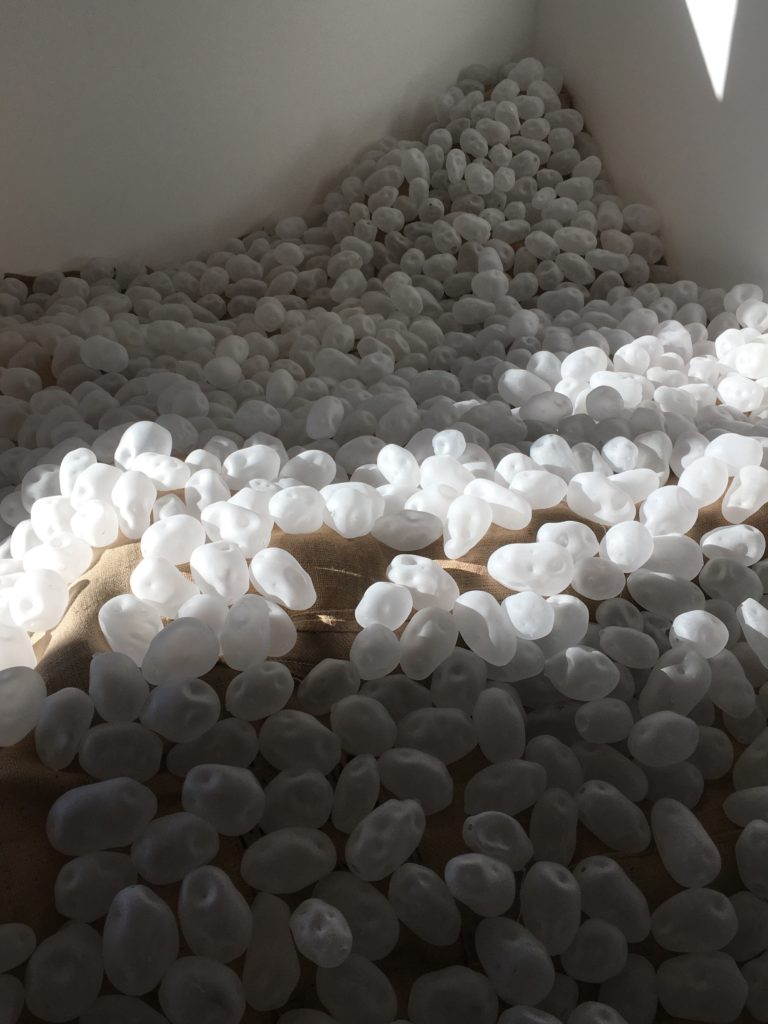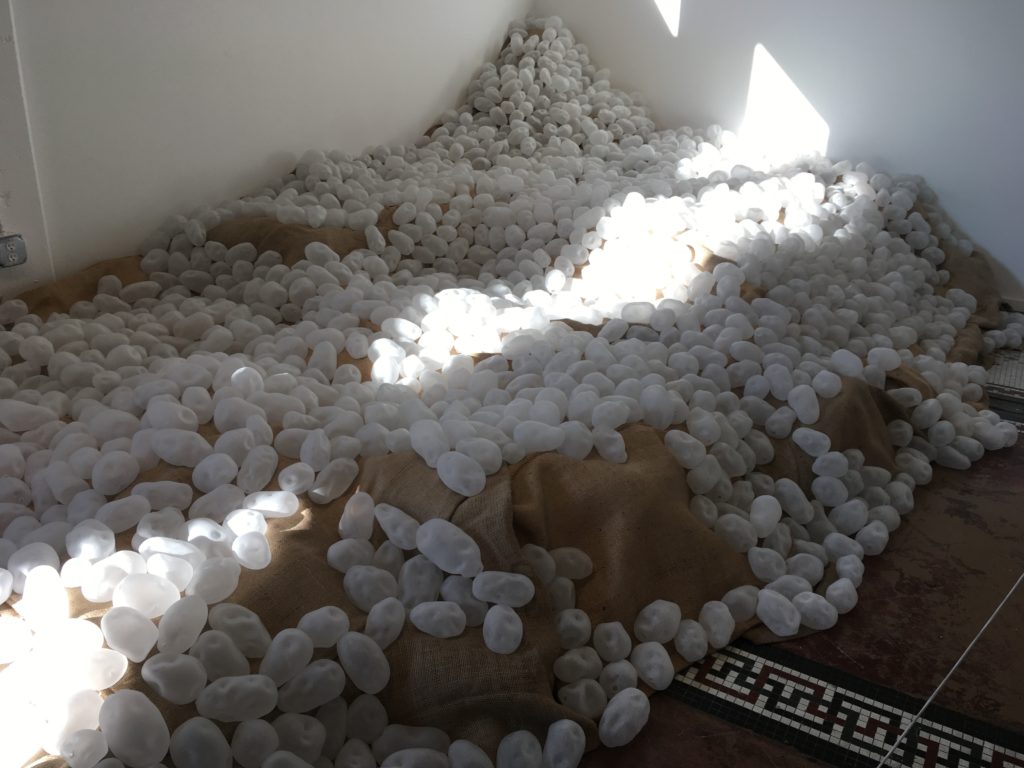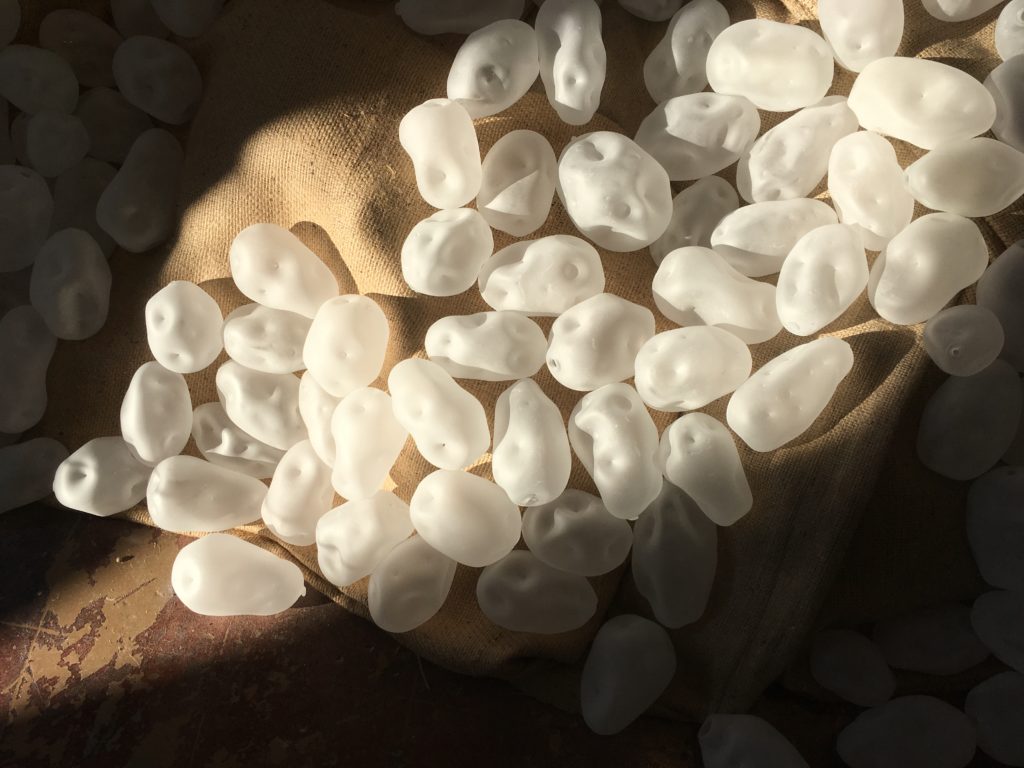


Paula Stokes’s 1845 Memento Mori at Method Gallery featured a stunning “cairn” of one thousand eight hundred and forty-five hand blown glass potatoes. Each potato was sandblasted making it opaque, and each one was different.
Paula Stokes is a native of Ireland who came here in 1993, but she still feels the draw of her home country.
She created this cairn to honor the millions of people who died in the potato famine in Ireland which began in 1845 and continued for four years. A potato blight, a fungus like organism first appeared in August of 1845, perhaps brought into the country on ships from the US (!). It took out one half of the crop immediately, and continued to infest crops for the next seven years, killing three quarters of the potatoes. As it wiped out crops, people became starved. Millions died.
All of the Irish farmers were tenant farmers on land owned by British gentry. Those landowners had introduced the potato only one hundred years earlier as a monocrop. But shockingly, even at the height of the famine, landowners ordered food exported to the United Kingdom.
In Ireland the failure of the crops led to immense numbers of deaths. Survivors, unable to have a crop to sell, were evicted from their homes, sent to orphanages and workhouses, and massive public food kitchens. Workhouses provided a temporary solution, but funds ran out quickly. The response from the British government was entirely inadequate, leading to more suffering.
Widespread death and desperation led to huge migration to the United States, as well as other parts of the world. Orphaned girls were shipped to Australia. In the first four years one million people emigrated. By 1901 six million had emigrated.
The immigrants to the United States faced prejudice and racism, just as immigrants do today. Nativists attacked them. But in the long run they, like all immigrants here, have become part of our country and made many invaluable contributions.

Paula Stokes’ installation both honors the nightmare of the famine in Ireland, and creates an homage to the idea of community and caring. The creation of the piece required a team of assistants. The act of blowing into the glass suggests a life giving force. The installation becomes, as one writer in the catalog suggests, an echo of the landscape filled with ancient ruins from which the artist has come.

The installation is both beautiful and fragile. As we touched a glass potato and immersed ourselves in the installation, it is possible to think about both the deaths of those who relied on agriculture, and the lives of those who survived.
The ownership of the land by the ruling classes in England led directly to destitution for the farmers who were their tenants, when the crops failed. Today migration has similar underlying causes in the exploitation of the poor by the wealthy. Now the wealthy are corporations destroying indigenous lands to build dams and extract oil in Central America. In Africa, droughts, war, greed and poverty lead to migration.
As people today are driven from their homes by famine and violence, both caused or aggravated by the climate crises, it is crucial to remember the underlying economic forces of the disastrous famine that drove Irish migration of the late nineteenth century.
But unlike the nineteenth century, when the millions of Irish could enter the US or Europe easily, the immigrants today who do not die or drown are almost entirely delayed, detained, and locked up. Traditional procedures for entry are rapidly being dismantled by racist governments.
Thank you Paula Stokes for your meaningful work. We need more “Memento Mori” for our current world wide crisis.